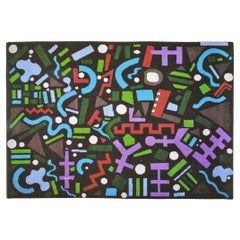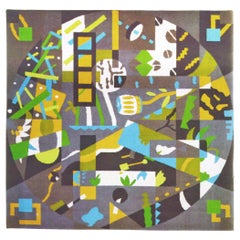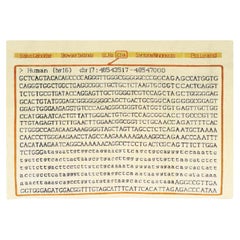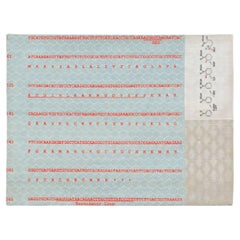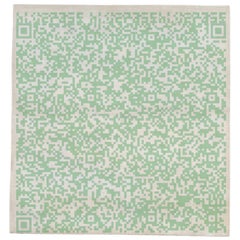Rugs
2010s Italian Post-Modern Rugs
Wool
2010s Italian Post-Modern Rugs
Wool
2010s Italian Post-Modern Rugs
Wool
2010s Italian Post-Modern Rugs
Wool
2010s Italian Post-Modern Rugs
Wool
2010s Italian Post-Modern Rugs
Wool
2010s Italian Post-Modern Rugs
Silk
2010s Italian Post-Modern Rugs
Wool
2010s Italian Post-Modern Rugs
Wool
2010s Cypriot Post-Modern Rugs
Wool, Felt
21st Century and Contemporary Caucasian Revival Rugs
Wool, Natural Fiber, Organic Material
2010s Cypriot Post-Modern Rugs
Wool, Felt
Early 20th Century Turkish Oushak Rugs
Wool, Natural Fiber
Early 20th Century Turkish Oushak Rugs
Wool, Natural Fiber, Organic Material
2010s Cypriot Post-Modern Rugs
Wool, Felt
2010s Cypriot Post-Modern Rugs
Wool, Felt
Early 20th Century Persian Sultanabad Rugs
Wool
Early 20th Century Caucasian Kilim Rugs
Wool, Natural Fiber
2010s Cypriot Post-Modern Rugs
Wool, Felt
Early 20th Century Turkish Kilim Rugs
Wool, Natural Fiber
Early 20th Century Turkish Oushak Rugs
Wool, Natural Fiber
Early 20th Century Turkish Oushak Rugs
Wool, Natural Fiber, Organic Material
Early 20th Century Caucasian Oushak Rugs
Wool, Natural Fiber
Early 20th Century American Navajo Rugs
Wool
Early 20th Century Turkish Kilim Rugs
Wool, Natural Fiber
Early 20th Century Persian Rugs
Wool, Cotton
Early 20th Century Turkish Kilim Rugs
Wool, Natural Fiber
Early 20th Century Turkish Kilim Rugs
Wool, Natural Fiber
Early 20th Century Turkish Kilim Rugs
Wool, Natural Fiber, Organic Material
21st Century and Contemporary Turkish Revival Rugs
Wool, Natural Fiber, Organic Material
21st Century and Contemporary Turkish Revival Rugs
Wool, Natural Fiber, Organic Material
Early 20th Century Turkish Kilim Rugs
Wool, Natural Fiber
Early 20th Century Caucasian Kilim Rugs
Wool, Natural Fiber
Early 20th Century Turkish Kilim Rugs
Wool, Natural Fiber
21st Century and Contemporary Turkish Revival Rugs
Wool, Natural Fiber, Organic Material
21st Century and Contemporary Turkish Revival Rugs
Wool, Natural Fiber, Organic Material
Early 20th Century Turkish Oushak Rugs
Wool
21st Century and Contemporary Turkish Revival Rugs
Natural Fiber, Organic Material, Wool
21st Century and Contemporary Turkish Revival Rugs
Wool, Natural Fiber, Organic Material
21st Century and Contemporary Turkish Revival Rugs
Wool, Natural Fiber, Organic Material
21st Century and Contemporary Turkish Revival Rugs
Wool, Natural Fiber, Organic Material
21st Century and Contemporary Turkish Revival Rugs
Wool, Natural Fiber, Organic Material
21st Century and Contemporary Turkish Oushak Rugs
Wool, Natural Fiber, Organic Material
21st Century and Contemporary Turkish Revival Rugs
Wool, Natural Fiber, Organic Material
21st Century and Contemporary Turkish Revival Rugs
Wool, Natural Fiber, Organic Material
21st Century and Contemporary Turkish Arts and Crafts Rugs
Wool, Natural Fiber, Organic Material
21st Century and Contemporary Turkish Revival Rugs
Wool, Natural Fiber, Organic Material
21st Century and Contemporary Turkish Revival Rugs
Wool, Natural Fiber, Organic Material
Early 20th Century Persian Malayer Rugs
Wool
21st Century and Contemporary Turkish Revival Rugs
Wool, Natural Fiber, Organic Material
2010s Afghan Minimalist Rugs
Wool
Early 20th Century Turkish Oushak Rugs
Wool, Natural Fiber
21st Century and Contemporary Turkish Revival Rugs
Wool, Natural Fiber, Organic Material
1920s American Adirondack Vintage Rugs
Wool
21st Century and Contemporary Turkish Revival Rugs
Wool, Natural Fiber, Organic Material
Early 20th Century British Rugs
Fabric
2010s Nepalese Post-Modern Rugs
Wood
Early 1900s Chinese Chinese Export Antique Rugs
Wool
